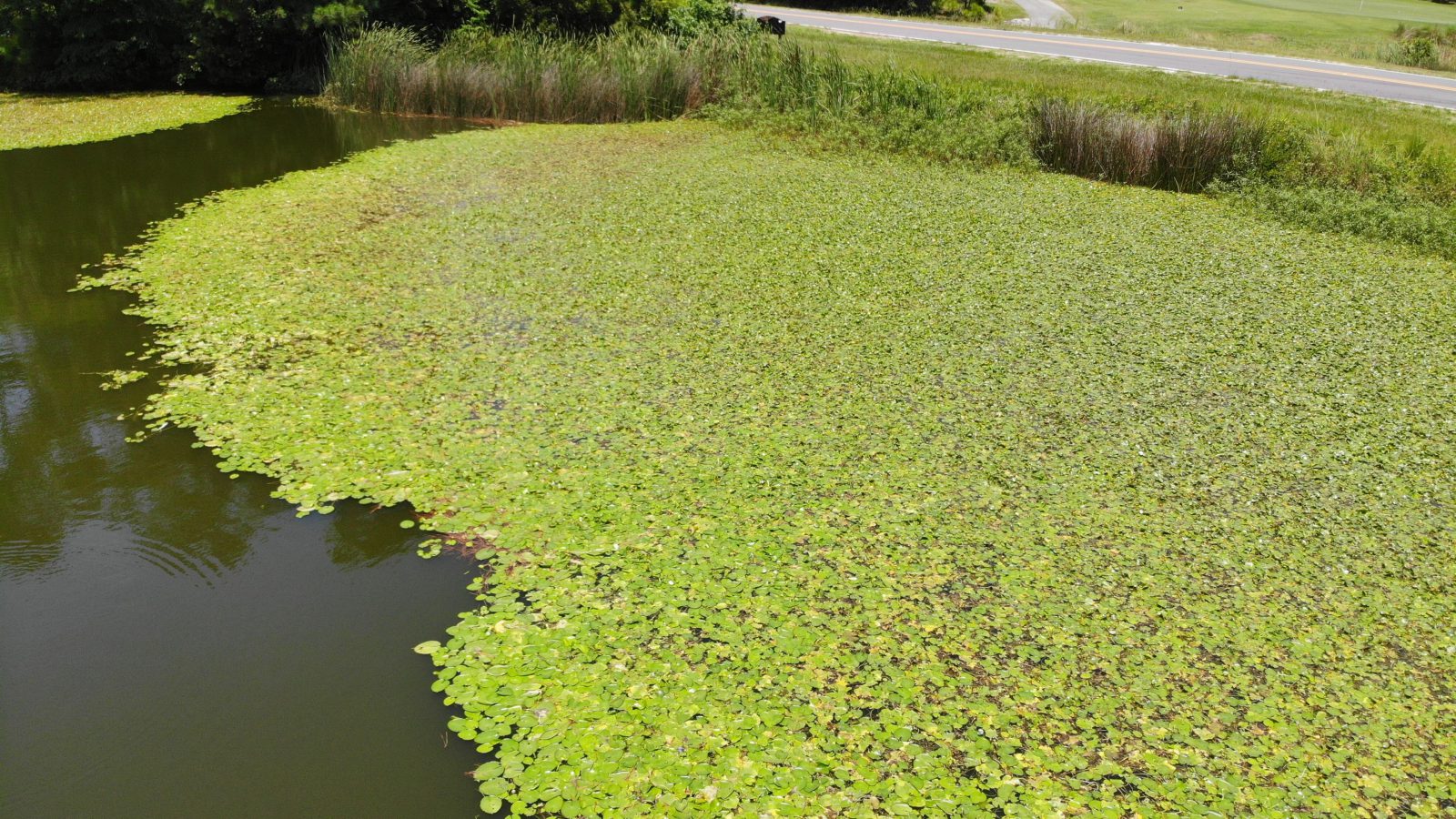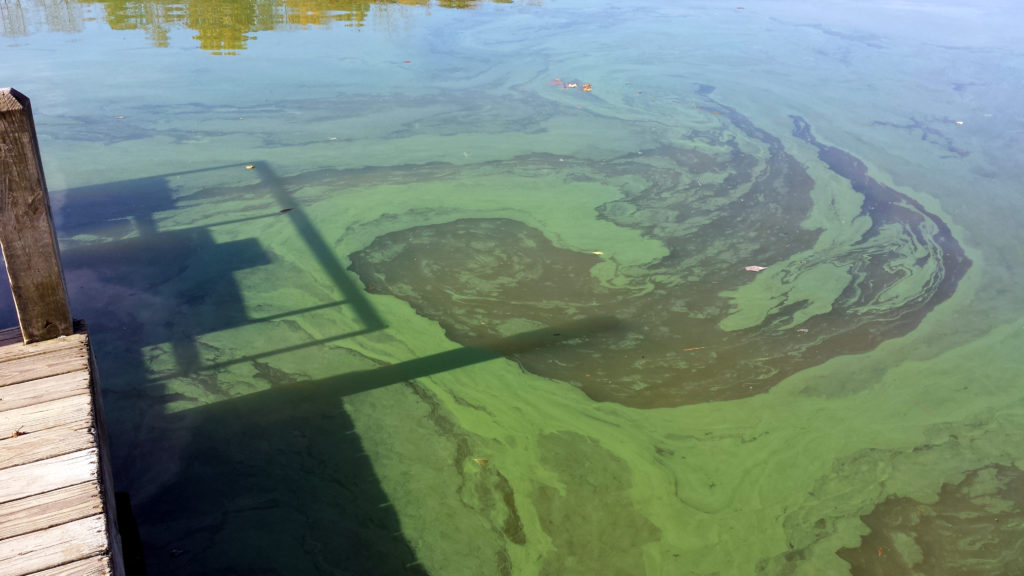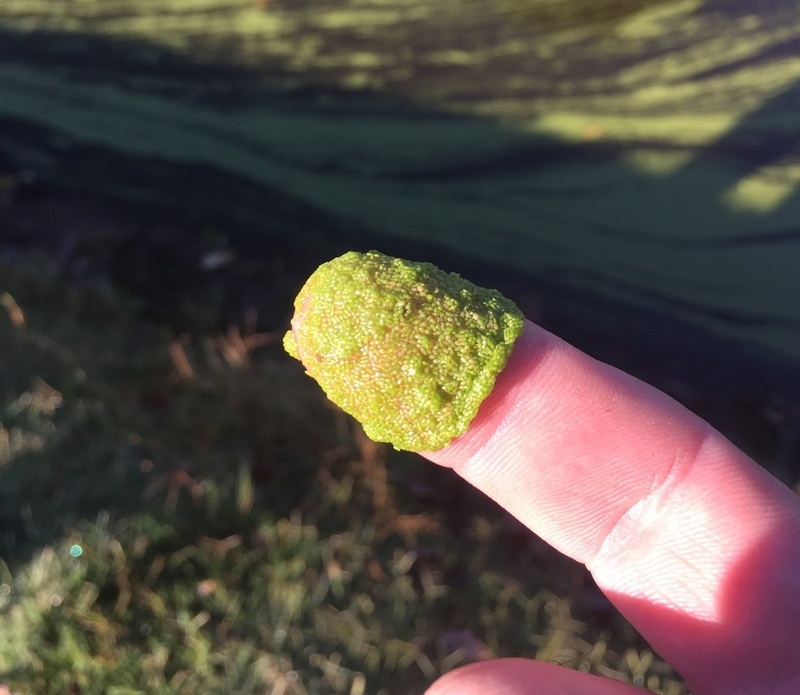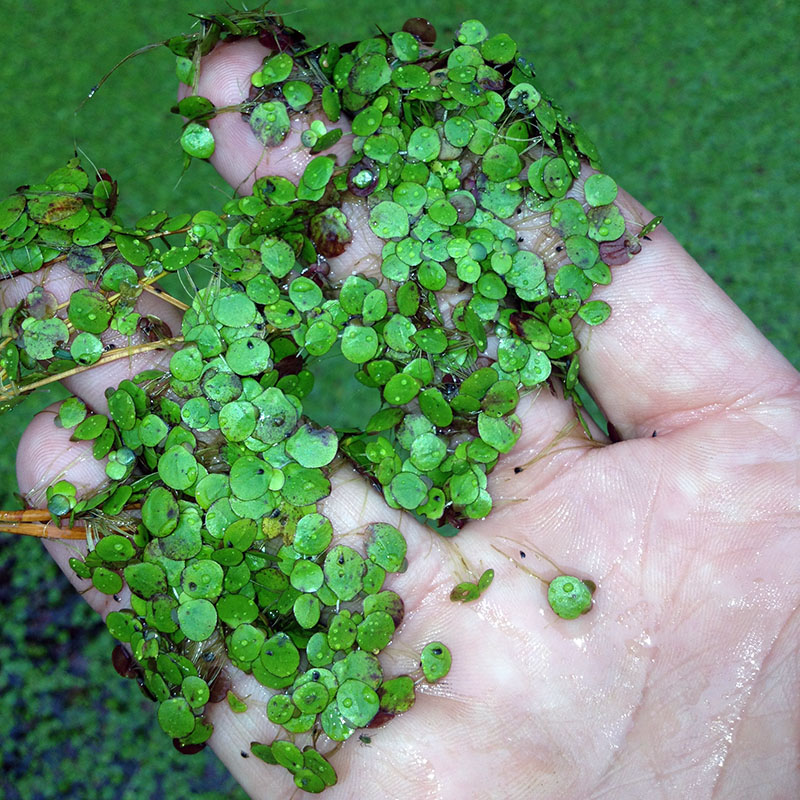
Know your Green: Pond Algae and Aquatic Vegetation
Sometimes lake and pond managers are called upon to look at waterbodies that are completely covered in some form of aquatic vegetation. Usually, the entire surface of the lake is completely green and the pond owner assumes that they have an algae problem. While pond algae is sometimes the cause of the green layer across the pond, there are other types of vegetation that will completely cover the pond surface as well.

Algae
Algae blooms will often begin as small areas in the pond, but can grow quickly if untreated, and can cover the entire body of water. Filamentous and planktonic algae are the two basic types of algae found in lakes and ponds. Filamentous algae is long, stringy and slimy and grows in large mats or patches. Patches of filamentous algae are often bright green with shades of brown mixed in. Planktonic algae is usually light green, but sometimes there are blooms of red planktonic algae. There is no substance to planktonic algae when you try to pick it up as it is made up of individual plankton cells. Blooms of planktonic algae will often blow across the pond with the wind and collect in corners of the pond.

Watermeal
Watermeal (Wolffia spp.) is a very small plant that is often confused with algae. It is a light green, floating plant that has no roots and grows very rapidly. The plant can easily be identified by its extremely small seed-like shape and gritty texture. Like planktonic algae, watermeal will be blown across a pond and collect in corners of the pond. Watermeal can be easily transported from one body of water to another by ducks, geese and other waterfowl. Quick action is recommended in bodies of water where watermeal is present so the plant can be killed before it overtakes the pond. Ponds with watermeal will often have duckweed as well.

Duckweed
Duckweed (Lemna minor), like watermeal, grows aggressively and can quickly overtake a pond, covering it in a layer of green plants. Identification of duckweed can be easily made by the small root extending into the water under a very small floating leaf. Quick action is also recommended for treating a pond with duckweed, due to its aggressive growth. Ducks will often transport duckweed from pond to pond as the plants are part of their diet.
Although algae, watermeal, and duckweed all may give the general appearance of the same problem, with some simple identifying markers you will be able to distinguish them from each other. Recognizing specifically what plant or algae you have will allow you to prepare for the proper treatment, as each of these problems actually requires a different treatment protocol. Working in conjunction with your professional lake management provider will help you deal with these issues correctly and keep your pond surface from becoming a green layer of unwanted growth.
SOLitude Lake Management is an environmental firm committed to providing full-service solutions that improve water quality, preserve natural resources, and reduce our environmental footprint. Our services include lake, pond, wetland and fisheries management programs, algae and aquatic weed control, mechanical harvesting, hydro-raking, installation and maintenance of fountains and aeration systems, water quality testing and restoration, bathymetry, lake vegetation studies, biological assessments, habitat assessments, invasive species management and nuisance wildlife management. Services, consulting and aquatic products are available to clients nationwide, including homeowners associations, multi-family and apartment communities, golf courses, commercial developments, ranches, private landowners, reservoirs, recreational and public lakes, municipalities, parks, and state and federal agencies. Learn more about SOLitude Lake Management and purchase products at www.solitudelakemanagement.com.









